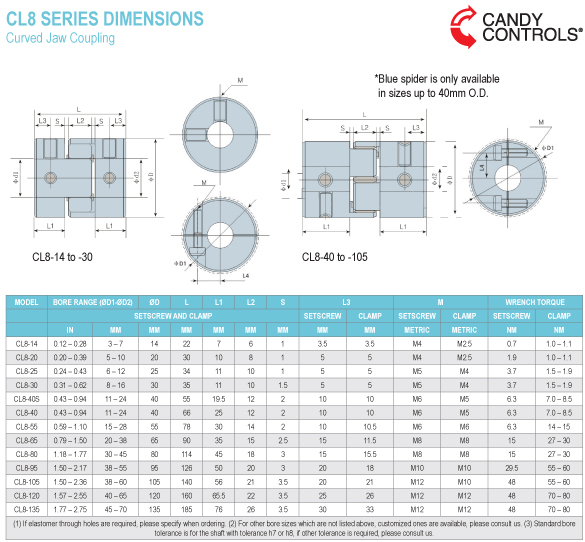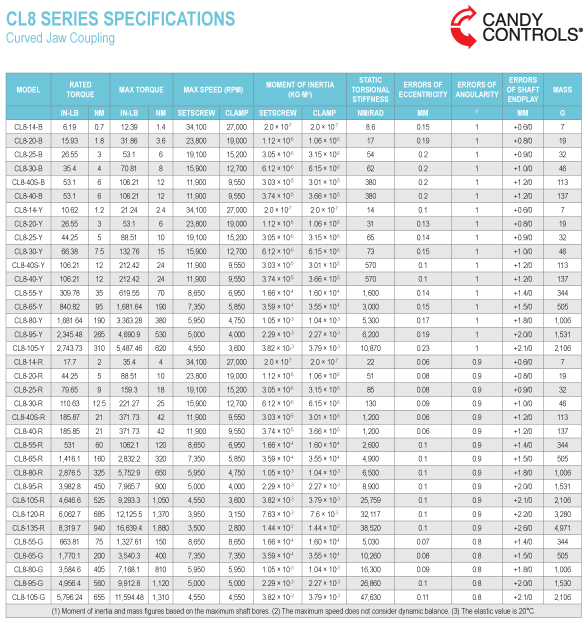CL8 SERIES DESCRIPTION
Curved Jaw Coupling
Candy’s CL8 Series zero-backlash, curved jaw coupling is a simple, cost-effective servo coupling. Easy to assemble, all you have to do is press its polyurethane sleeve into hubs on both sides of the coupling. Optimal performance is assured through its absorption of vibration, parallel and angular misalignments, and shaft end play.
• Simple, cost-effective servo quality couplings
• Available in setscrew, keyway and setscrew, and clamping designs
• Elastomer sleeve/spider absorbs vibration and multiple types of misalignment
• Available with multiple sleeve/spider options with varying hardness ratings
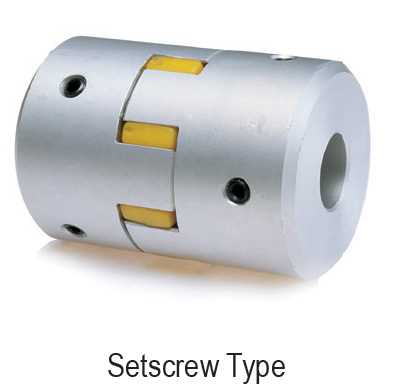
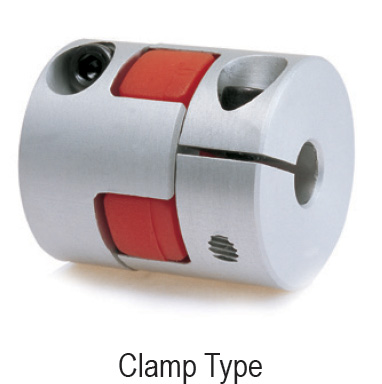
Options
Aluminum Hubs 6061
Spider-Shore Hardness
-80A (Blue)
-92A (Yellow)
-98A (Red)
Setscrew
Keyway and Setscrew
Clamp
Ordering Information
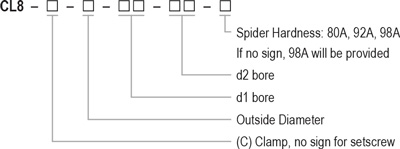
Back to Top
CL8 SERIES INSTALLATION
Curved Jaw Coupling
Use precautions:
- There are four kinds of elastomers with different hardness in this series. The allowable torque and absorption deviation of elastomers with different hardness are different. Please pay attention to the selection.
- Be sure to observe allowable tolerances of eccentricity, deflection and axis.
- Bolts must be tightened to specified torque.
- Elastomers have water and oil resistance, but an environment of extreme adhesion can lead to deterioration of product.
- Do not tighten set screws or clamping screws before inserting shafts.
Installation:
- Confirm whether the set screws or clamping screws are loose, remove rust, dust and oil on the inner surface of the coupling and from the shaft. Lubricants and contaminants have significant influence on the friction coefficient of the coupling and must be removed.
- Please insert the coupling onto the motor or driving shaft. The insertion length must be close to the side section length of the coupling; so that the clamping end has a large enough contact surface with the shaft to ensure sufficient friction
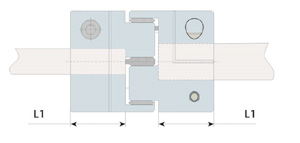
- When the set screws or clamping screws are loose, make sure the coupling can move slightly along the axis and rotation direction. lf it cannot move smoothly, please readjust the centering of the two axes/shafts. This method is recommended as a simple method to confirm the left and right oncentricity. If the same method cannot be used, please use other measuring methods to confirm the installation accuracy.
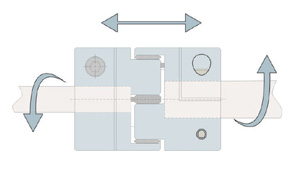
- After confirming that there is no compression, tension or other forces in the axial direction, please tighten the set screws or clamping screws by a verified torque wrench based on the tightening torque range listed in the parameter table.
- As an initial anti-loosening measure of clamping screws, it is suggested that the correct tightening torque be used again to re-
tighten screws.
 Candy Controls
When Timing is Everything
Candy Controls
When Timing is Everything

